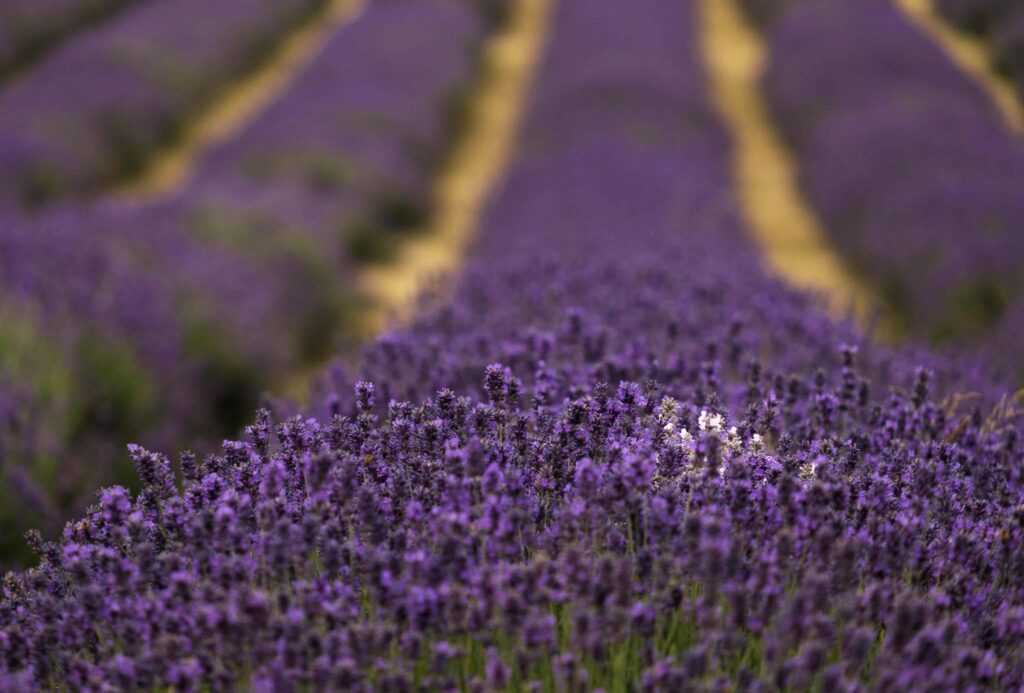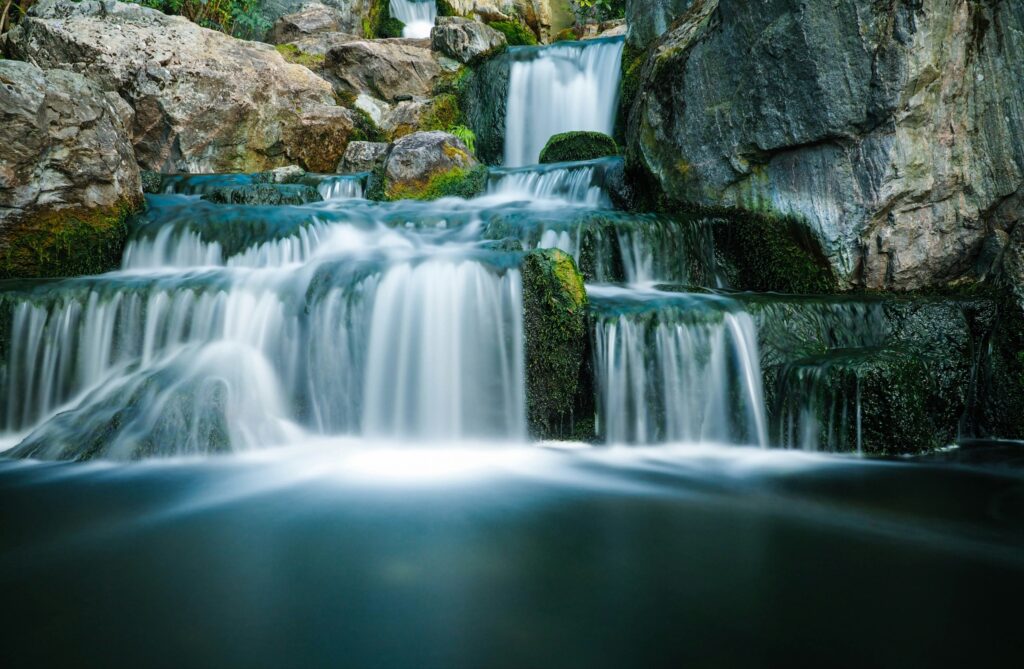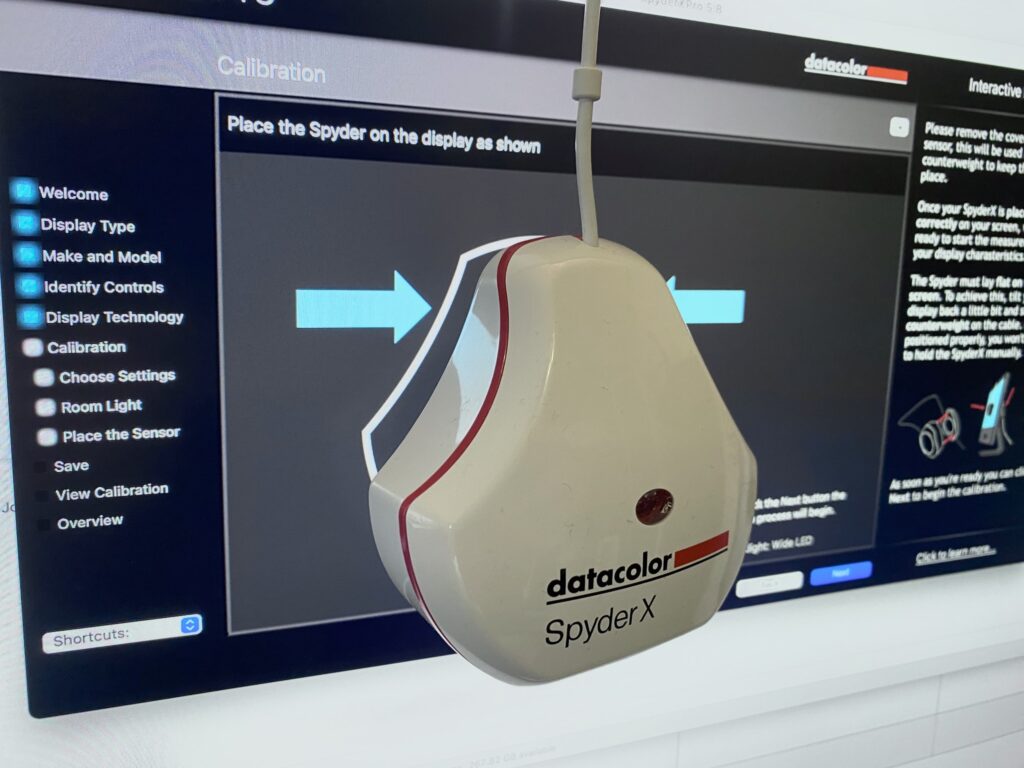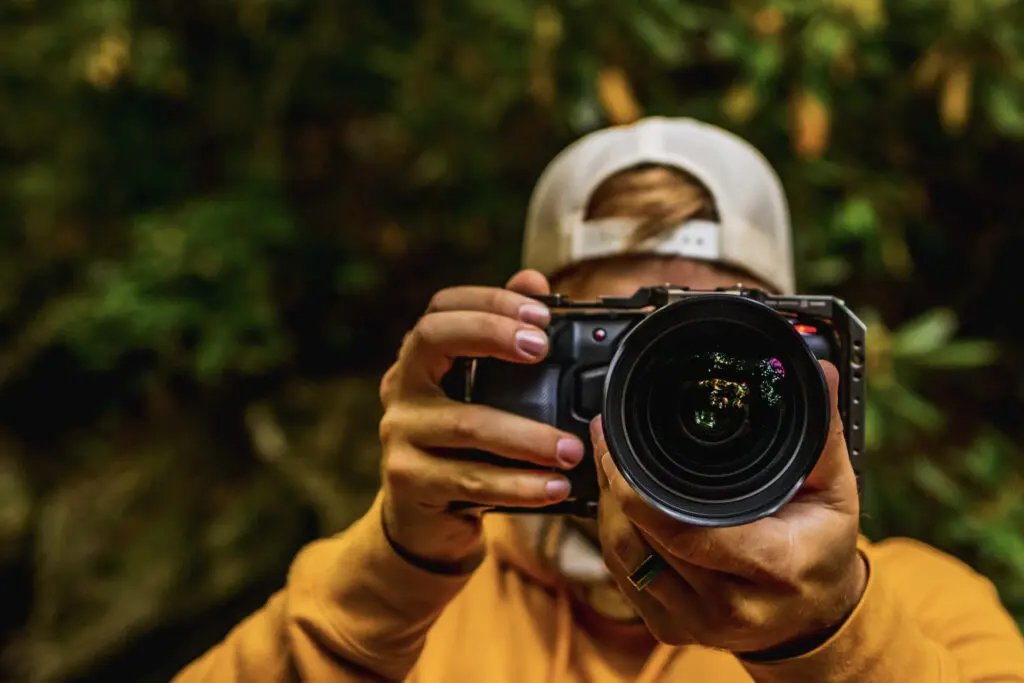The word “Flora” refers to the plants, shrubs, trees in a particular habitat or a geological location and usually importance is given to the native species. We know that most flora are brightly colored and especially flowers or foliage plants look bright and cheerful with striking colors. Flora also come with a lot of unique patterns and textures, that make them a very interesting subject or supporting elements for many photographers. In this article, although flora are bright and colorful, we will look at how to capture and edit dark moody flora photography.
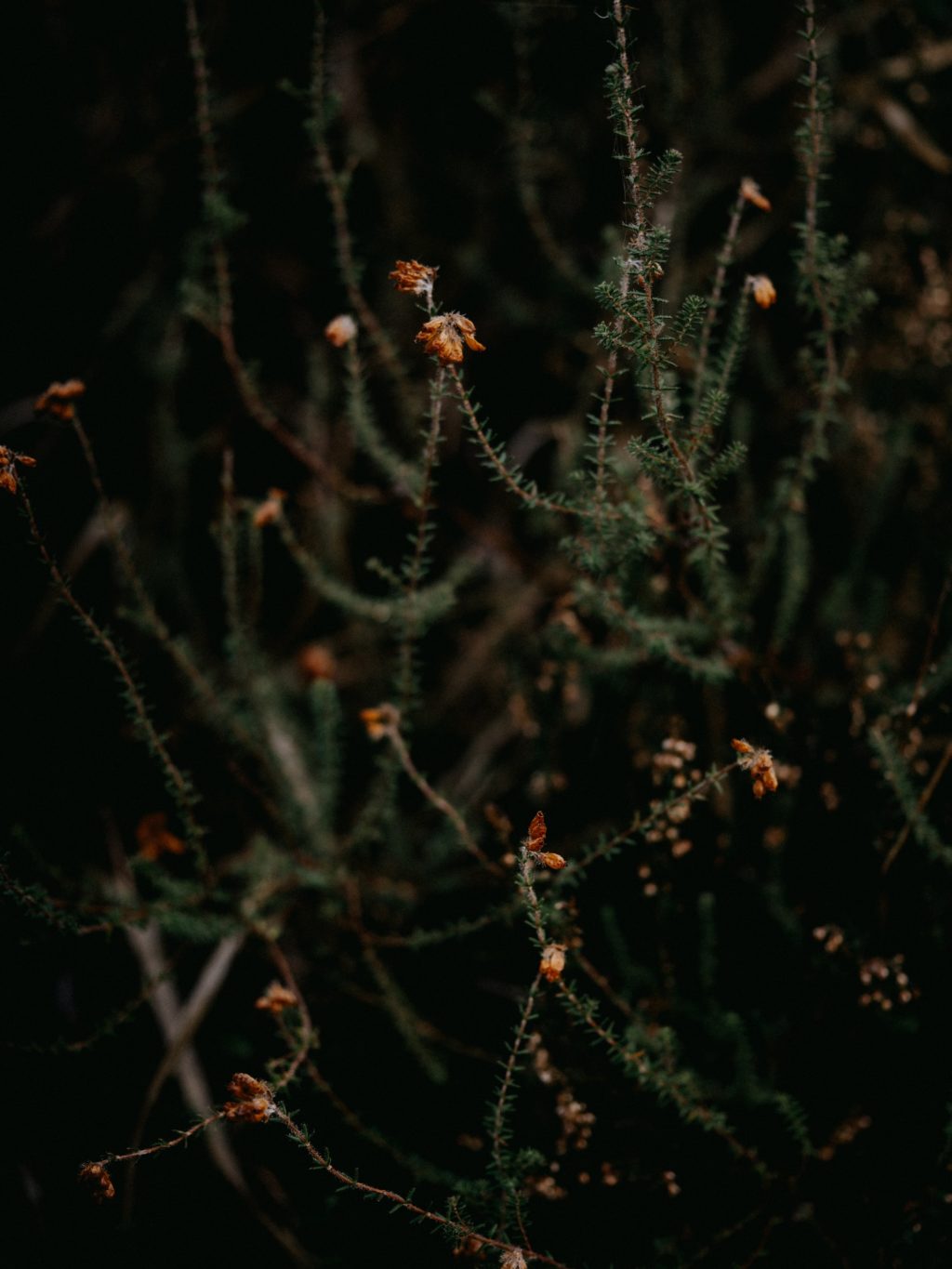
Most photographers look at the grand things and fail to notice the little details of the flora that surround them and are available in abundance everywhere. When you really start to observe and notice how light beautifully illuminates the flora around us during different times of the day, you will be surprised at what interesting and artistic images you can capture.
We have already shared detailed articles on how to photograph a garden, leaves, flowers, and so on that have awesome information and ideas to look at the plants around you creatively and photograph them. This article is focused on how to capture and edit dark and moody images of the flora around us.
Although it looks as if flora are easier to photograph, it can be quite tricky and challenging at times to capture compelling flora images. With some tips and ideas, you can get the best results when photographing flora.
Flora is found all around us, so when looking for subjects, you can look around in your garden, backyard, during walks, or in a park. You can even bring your subjects indoors and photograph them in a suitable location in the house or in your studio. Here are some tips and techniques for moody photographs of flora.
Lighting For Moody Images Of Flora
Light is the most important factor for photography and when photographing flora to get a moody feel, you need to pay special attention to the light. Soft light is what is preferred for this kind of photography and hence an overcast day can be one of the best days for moody flora photography.
If you are shooting on a sunny day, look for shady areas where the light is soft and there is low light in the scene so you can get a moody photograph in the camera itself to start with. Look for flora in woodlands where they are shaded by tall trees and this way you will be able to capture a dark mood in the camera.
If you are shooting indoors, you can use window light and if the light is a bit harsh, you can diffuse it using curtains, blinds, or other diffusing material. Look at how light falls and illuminates the subject and then make changes by moving the subject near or far away from the light source to get the desired mood. Using a black reflector will help to absorb light and not let it bounce back on the subject by making it brighter.
I personally like to use and would recommend light on overcast days and just after sunset for moody soft photographs of flora.
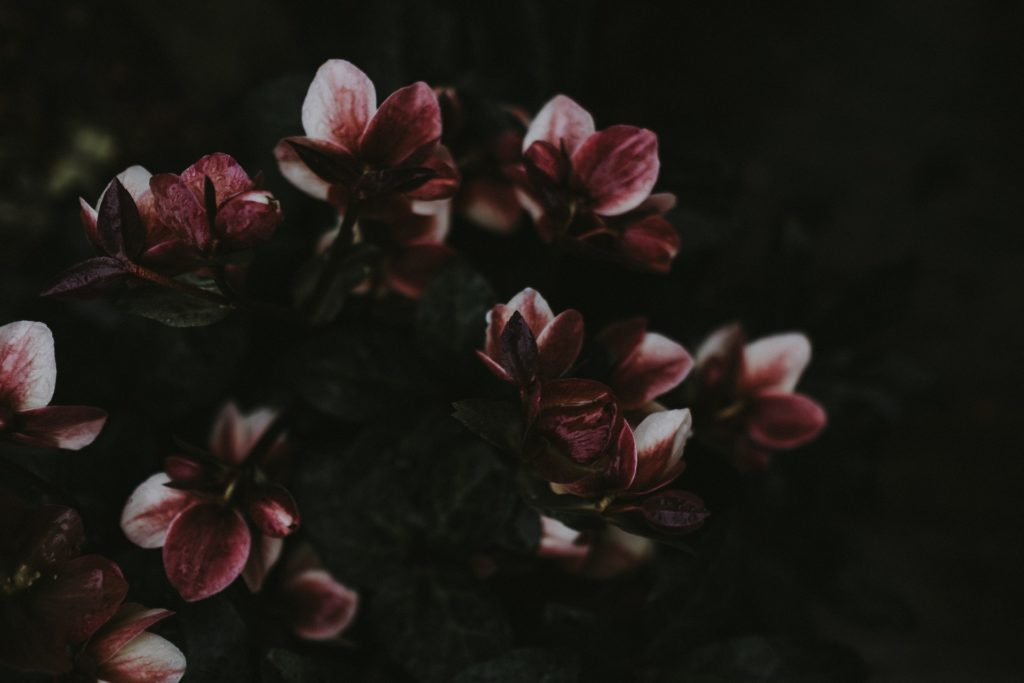
The Right Background For Capturing Interesting Images Of Flora
Backgrounds are really important to make your subject stand out and to capture a visually pleasing photograph. Do not photograph in a too much-cluttered area where everything is grown and spread all over the place. Look for locations where there are subjects that can be photographed to show their characteristics without having a cluttered and busy frame.
Note: Clutter can be used to photograph abstracts if you are able to focus on a single part of the scene and capture a meaningful frame in the chaotic scene.
Also, if you have to photograph in a cluttered area, look for contrasting colors that can help to isolate the subject that you are photographing. This way you will be able to capture an interesting photograph and make your subject stand out even if the frame is busy.
When choosing backgrounds for moody flora, make sure the background is dark, so you get the desired dark results. You can even make use of artificial dark backgrounds when shooting indoors or carry a dark piece of cloth when shooting outdoors if you are unable to get a naturally dark background.
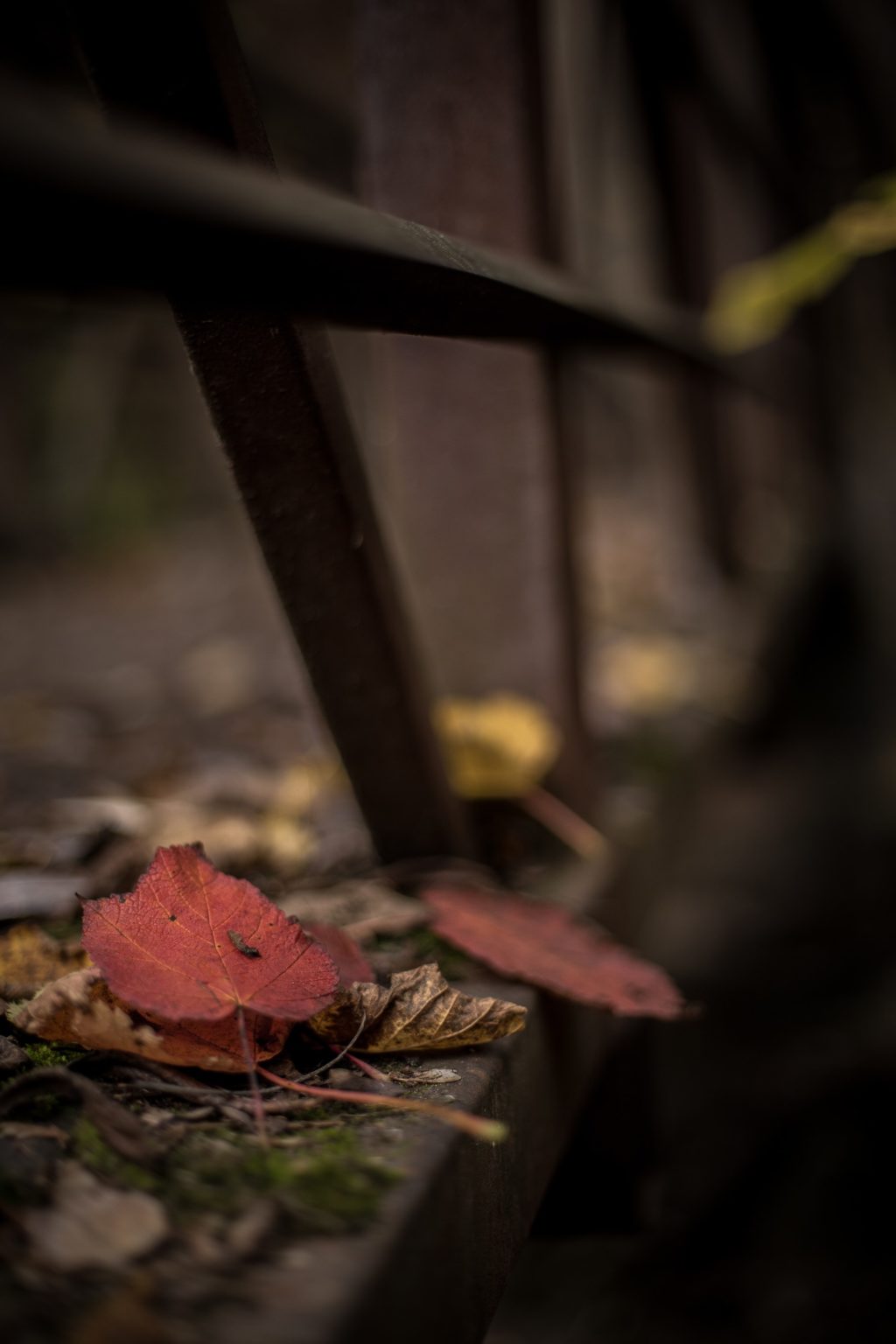
Composition For Dark Moody Flora Photography
Do not forget composition when capturing images of flora. As with all kinds of photography, the composition is important to capture interesting flora images. There are many compositional guidelines that you can follow and here are some ideas that you can try.
1. Rule Of Thirds
Rule of thirds can be usually used as a basis to place the subject in the frame and then other compositional guidelines mentioned below can be combined with the rule of thirds to capture interesting photographs. Place the subject and the supporting elements in the frame on the intersection of the rule of thirds lines or along the lines.
2. Leading Lines
Leading lines are a great way to draw attention to a particular spot in the frame or can be used to guide a viewer along with the different parts of the frame. When capturing flora, the branches, stems, patterns on the flora, etc., can be used as leading lines to capture an effective photograph.
3. Frame Within A Frame
Frames can add visual interest and can help to bring more attention to the subject. Use this compositional guideline to capture interesting and moody flora images.
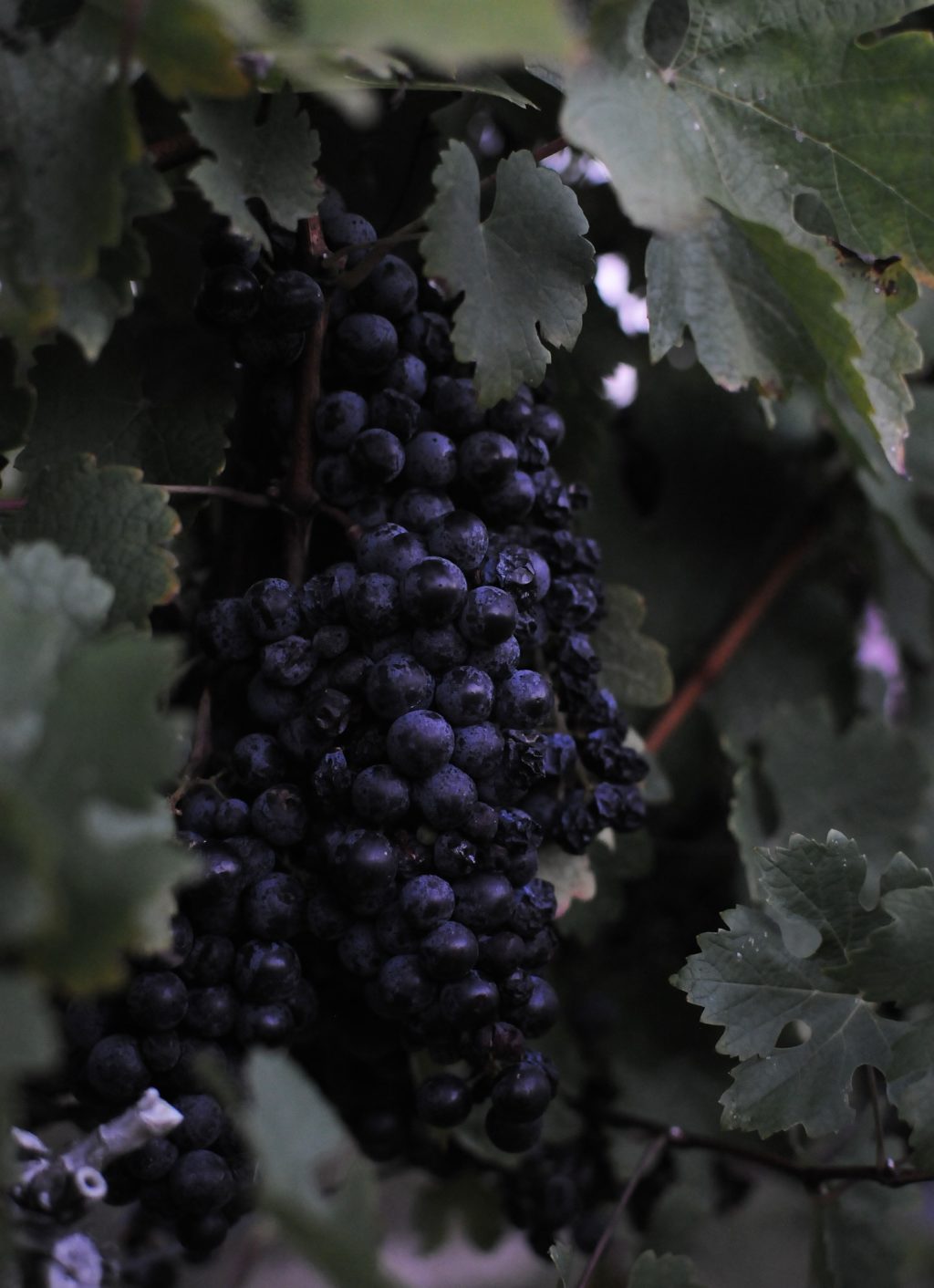
4. Curves
Similar to leading lines, curves are another great way to guide the viewer in the frame. Any curved features in flora can be used as a compositional tool when composing the shot. You can even capture interesting abstract images with the curved lines that you find in flora.
5. Golden Spiral
The golden spiral is a powerful compositional tool if done well. This is another compositional tool that will help to guide the viewer in the frame. Place elements in the frame along the path of the spiral and then the most important subject or point of focus in the center of the spiral.
6. Negative Space
Just like how negative space can be used to bring emphasis to the subject in other genres of photography, you can apply the same when capturing images of flora. Make sure you choose backgrounds that will complement your subject well.
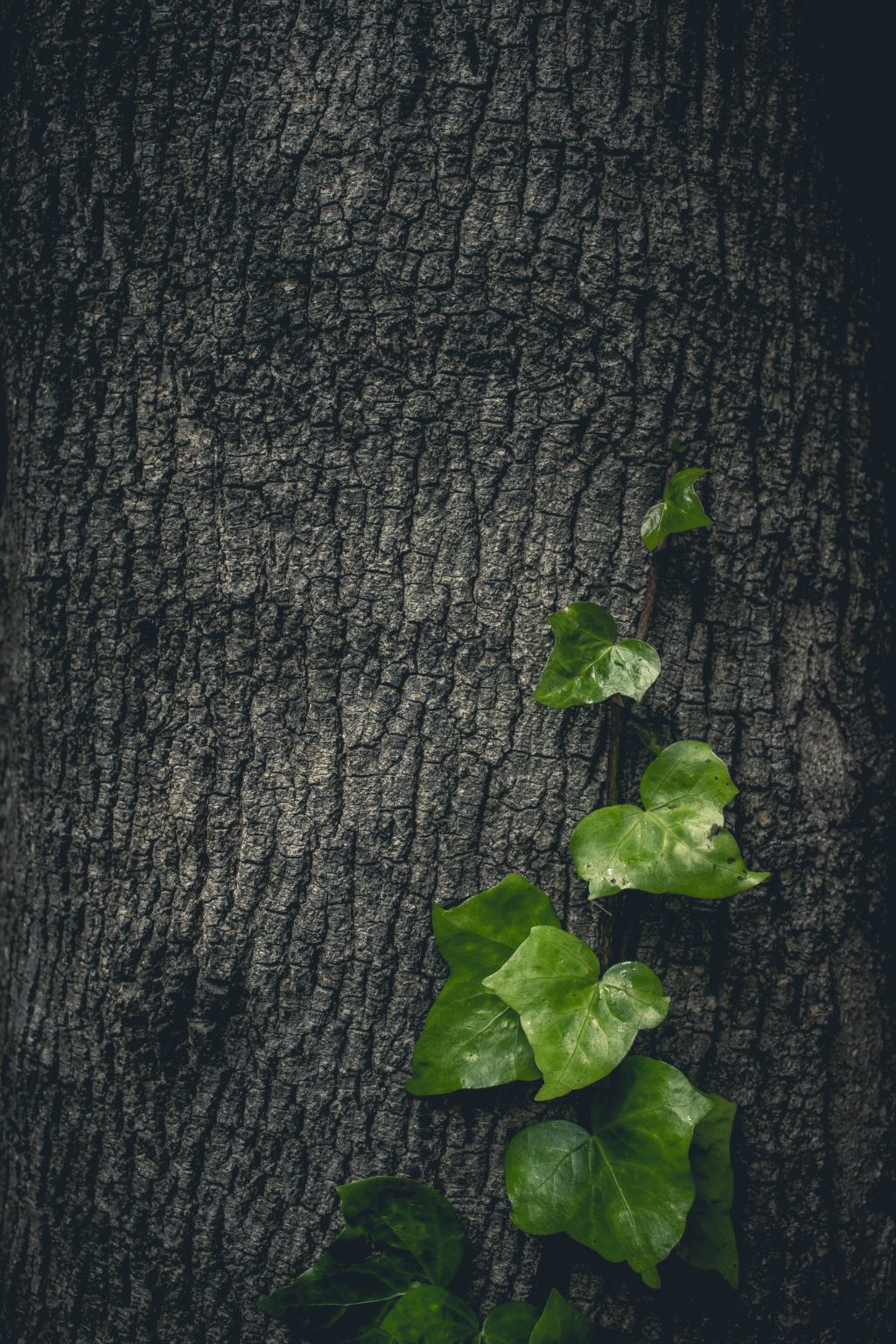
7. Contrasting Colours
When capturing flora for moody images, look for interesting colors in the frame for visual interest. Complementary colors go well together. So look for these colors in leaves or a combination of leaves and flowers and so on to capture stunning flora images.
8. Textures And Patterns
Flora is a great subject for capturing textures and patterns. You can either go up close to capture textures and patterns in a leaf, flower or petals, barks, etc., or you can look for patterns in a collective bunch of flowers, leaves, arrangement of plants, etc. Look for contrast, colors, and other visual interests in the patterns and textures for compelling and visually interesting photographs. You can also break the pattern with an element for more visual interest and composition.
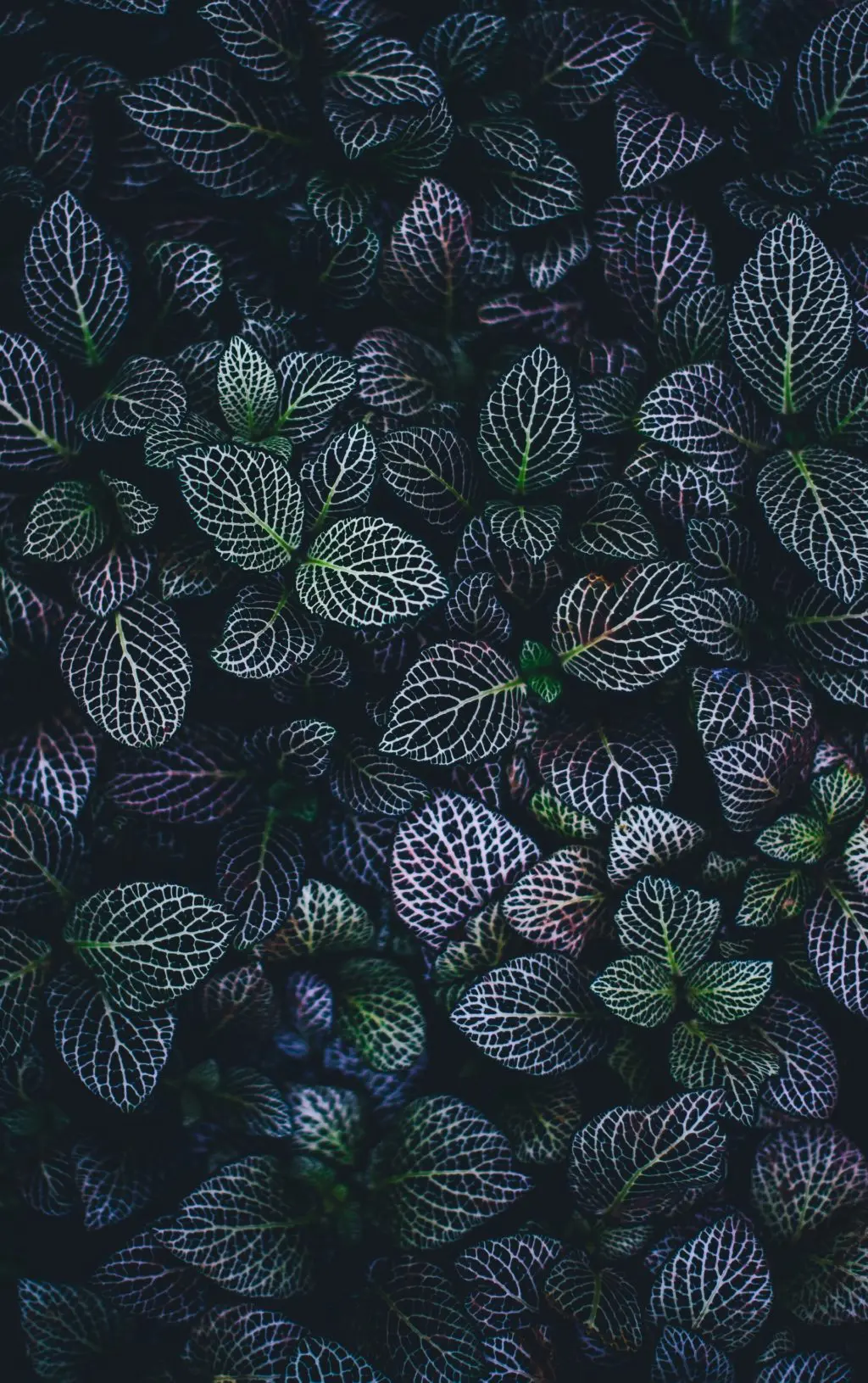
9. Fill The Frame
Look for interesting flora that you want to show through your photograph. Subjects with detailed patterns, textures, and colors can be great subjects to fill the frame and draw the viewer’s attention.
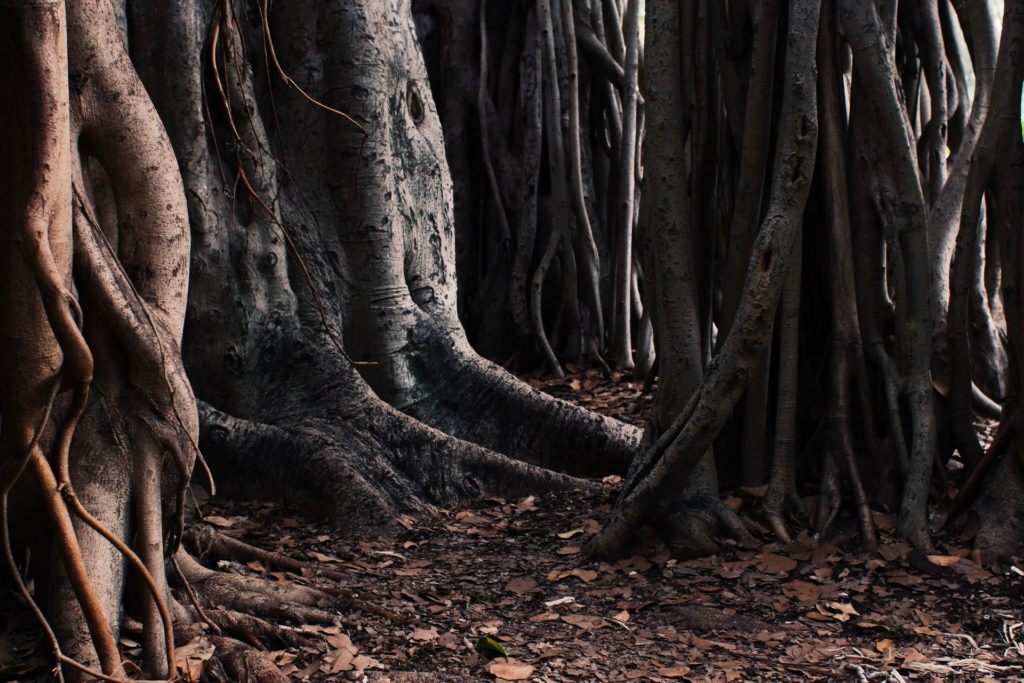
10. Look For Interesting Layers
When photographing images in soft light or on a cloudy day, sometimes the image may look flat and boring depending on how light falls on or illuminates the scene. In situations like these, in order to add depth and interest to the image, look for layers – foreground, middle ground, and background. You can also use the foreground to frame the subject in the middle ground for creative depth.
11. Perspective
We are most of the time used to looking down and capturing the flowers and leaves. Of course, it can look good for a flat lay kind of perspective, but if you get down and shoot from a different perspective, you can bring out the characteristic of the flora and give them more character in your photographs. Try various perspectives and see which works the best.
12. Abstracts
Flora provides great opportunities for abstract photography. You can capture these abstracts all through the year from dried and dead flora in autumn and winter to the lush green and colorful ones in spring and summer. So look closely for opportunities to capture powerful abstracts of flora and see if they will be great subjects for moody photographs.
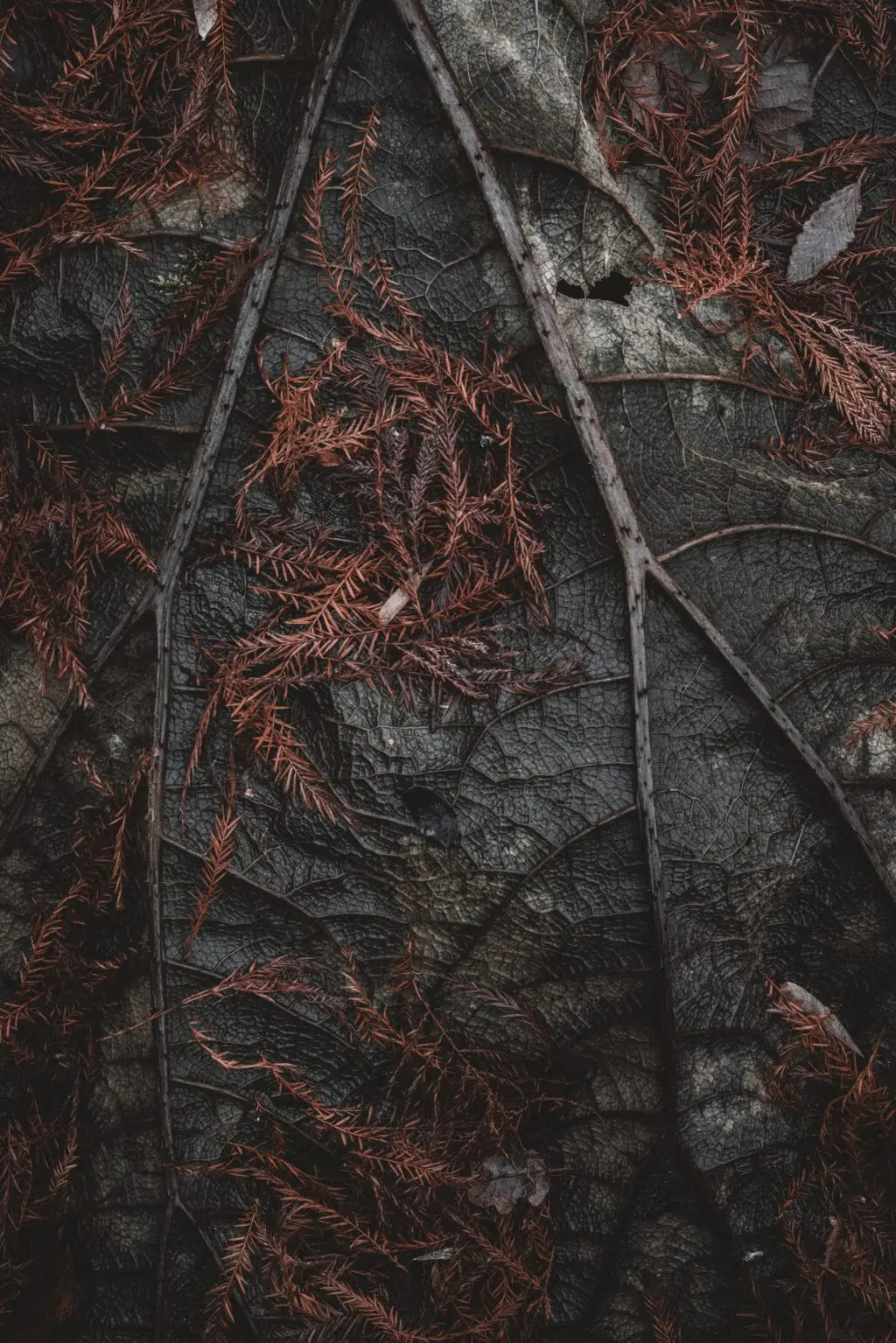
Gear For Photographing Flora
For photographing the flora, you do not need to worry much about the gear that you need. There are no specific gears required and you can even shoot brilliant flora photographs using a smartphone if that is the only gear you have in your hand.
1. Camera
Generally, it is good to have a camera that can shoot in manual mode, so you can have creative control over the exposure by selecting the desired aperture value, shutter speed, and iso. This could be a DSLR, a mirrorless camera, or another compact camera that allows manual control overexposure.
2. Lenses
When it comes to lenses, you can use faster lenses like the 35mm or 50mm lens which most photographers may have in their kit. Macro lenses are especially useful if you wish to capture close-up details of leaves, flowers, and other parts of a plant. If you wish to shoot with a range of focal lengths, you can have the 24-70mm zoom lens which is versatile for almost any type of photography. If you only have the kit lens, go ahead and by all means, use it with the camera that you have.
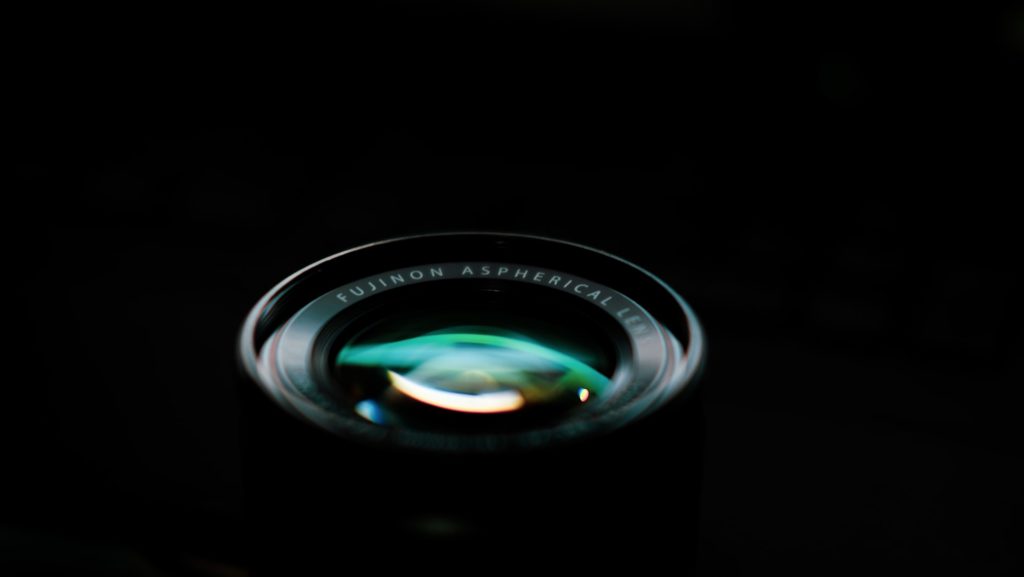
3. Tripod
Tripod can be a good accessory when shooting flora because it will help with sharp images and also allow you to creatively compose the shot. Use a cable release with a tripod for best results. Tripods will also help with focus stacking macro shots. If you are on a walk and do not want to carry a tripod, then you can just shoot handheld.
If you have only a smartphone, use it. See if you have a manual mode in the camera app, or use an app that supports manual exposure so you can creatively expose the photographs. Do not rely on the auto-exposure feature, instead of slide down or up on the screen after locking focus to get the dark and moody exposure in the photo.
Camera Settings To Capture Flora With Moody Results
Some camera settings to keep in mind when capturing moody flora images are:
- Use shallow depth of field to make the subject stand out. Use greater depth of field like f/5.6 to f/7 if you are capturing textures and need to give them more emphasis.
- If you find that autofocus is tricky in low light, then use manual focus. If you have the focus peaking feature, use it for sharp focus.
- Slightly underexpose the photos than you normally would. If you are not confident enough, you can do this when post processing, because if the image is overly underexposed, you may see artefacts when recovering shadow details.
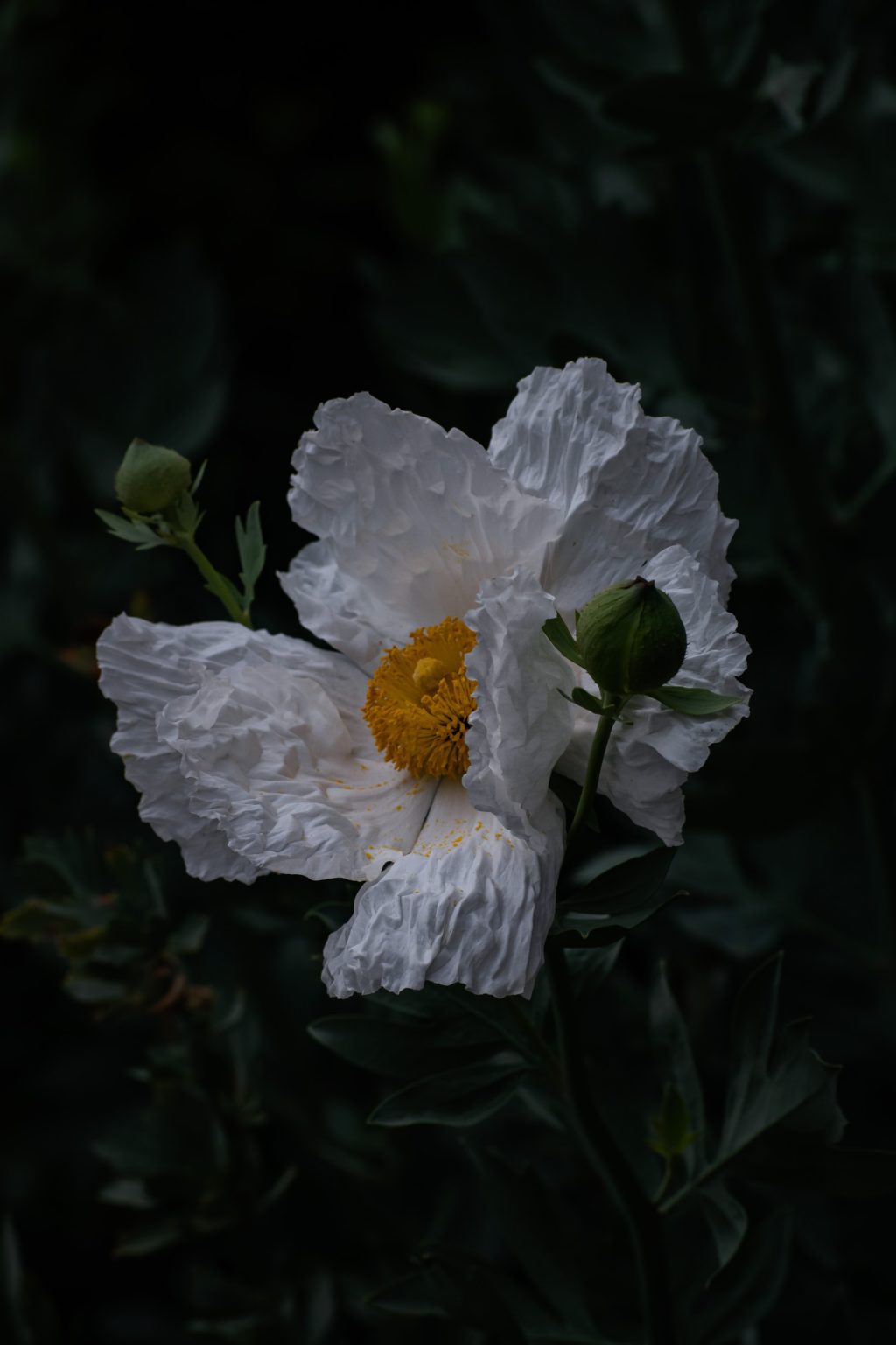
Editing Moody Flora Images
Even if you got the images looking moody in your camera, it is good to post-process the images to add a punch, bring out the colors and details, and add a better mood to the images. There are many apps for smartphones and for the computer and you can use one of your favorite apps to post-process the images.
Moody flora images look great when you add a fade effect to them to make the image look a bit dreamy. One of the apps that I most often use for this kind of edit on a smartphone is the VSCO app. This app is free for both iOS and Android and the free version comes with a bunch of beautiful presets. If you do not want to use the presets, you can use the fade feature in the app to create that effect.
There are many other apps that have the fade effect and some brilliant presets. Some of the apps that I personally use are Mextures, Snapseed, RNI Films, etc. You can either use the fade effect in the app or make use of the “Curves” for example in Snapseed to bring that effect.
1. Tips To Edit Moody Flora Images On The Smartphone:
- Adjust the exposure of the image to get the right mood. Usually having it a bit underexposed works well.
- Add a bit of contrast because image taken in soft light may sometimes lack contrast. So add if necessary.
- If you think the image needs some sharpness, add some if needed. Be careful to not overdo this.
- Play with the saturation slider. You may need to mute the very vibrant tones a bit depending on the colours in the image or maybe sometimes increase the saturation if the image lacks colours.
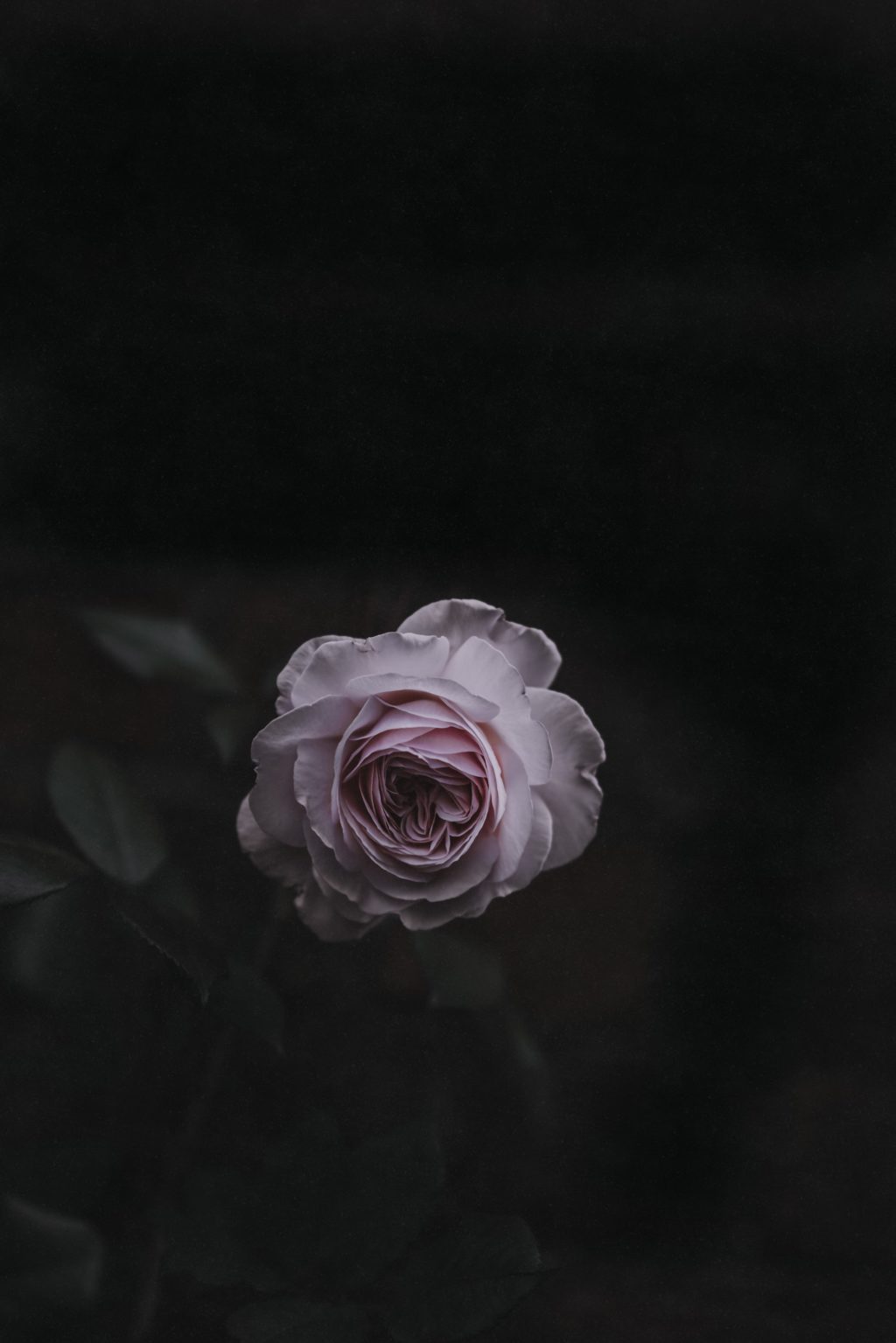
- Adjust white balance to get the right colours in the image. Do not use very warm temperatures. If the image looks too warm, you may need to reduce the temperature to get the moody look.
- Also, do not pull out too much shadow details like you normally would. Moody photos look good with slightly dark shadows than usual.
- Add a bit of fade to give the image a good moody feel. This depends on the photographer’s choice of visual appeal.
- Besides the above, you can add tones the shadow areas. Usually a blue tint works great for moody photos, but if you prefer other colours like purple, then use it if that suits the photo and its mood.
- Sometimes, depending on the subject and the composition, a slight vignette can bring more attention to the subject.
If you are post-processing for moody flora images on the computer, choose one of your favorite apps to post process the images. Here are some tips!
2. Tips For Editing Dark Moody Flora Photography On Your Computer:
- It is good to keep the exposure a bit low for moody photographs.
- Keep the contrast based on the resulting look you are going for. Less contrast for soft and dreamy images and a bit more contrast otherwise.
- Keep the temperature a bit cool so you get the moody feel in the image. Remember, white balance can be used as a powerful tool to create interesting moods and to add creativity in images. Here are two articles that talk about it:
- Tone down saturation of too bright or saturated colours if required. We do not need flashy colours in a moody photograph.
- Use the tone curve to add a bit of fade to the image. Playing with the tone curve can help you to bring your creative vision to life. This is a tool not used by many photographers, but is one that should be tried.
- Some post processing applications allow you to add a specific tone to the highlight and shadow areas. In this case, adding blue, purple or greenish tones to the shadow areas after adding some fade will help to give a specific mood to the images. Autumn images will work with orangish brown tint added to the shadow areas.
- Besides the above, you can add your own creative edits to the images based on what you wish to create. Do not pull out too much shadow details.
If you are someone who loves to photograph flora, what are your choices of photographing and editing them? Share your tips with us in the comments section below.
Further Resources:

